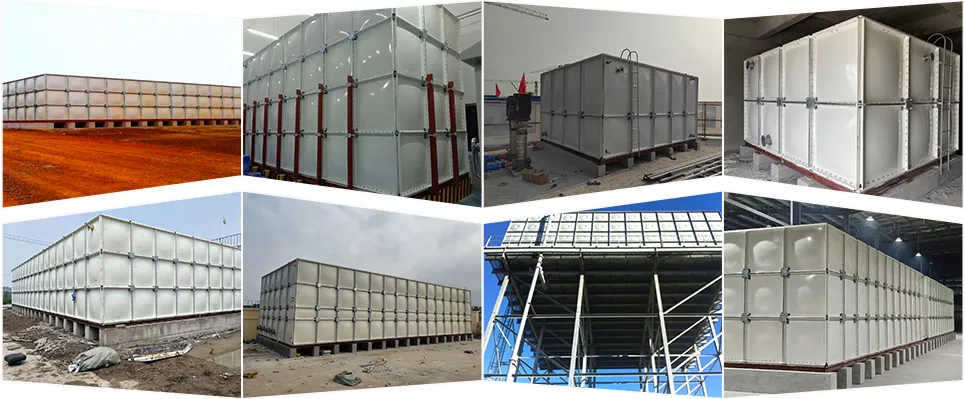loading...
- No. 9, Xingyuan South Street, Dongwaihuan Road, Zaoqiang County, Hengshui, Hebei, China
- admin@zjcomposites.com
- +86 15097380338
- Welcome to visit our website!
fiberglass reinforced plastic grating
Fiberglass Reinforced Plastic Grating A Comprehensive Overview
Fiberglass reinforced plastic (FRP) grating has emerged as a superior alternative to traditional grating materials such as steel and aluminum in various industrial, commercial, and architectural applications. This innovative material combines fiberglass with a polymer resin to create a lightweight, durable, and corrosion-resistant product that can meet the demanding requirements of numerous environments.
Key Characteristics and Benefits
One of the primary advantages of FRP grating is its exceptional strength-to-weight ratio. Unlike steel gratings, which can be cumbersome and heavy, FRP grating offers high tensile strength while being significantly lighter. This reduced weight translates into easier handling and installation, thus lowering labor costs and improving overall efficiency.
Corrosion resistance is another critical characteristic of fiberglass grating. As it is made from non-corrosive materials, FRP grating is ideal for environments exposed to harsh chemicals, saltwater, or other corrosive agents. Industries such as chemical processing, wastewater treatment, and marine applications have found FRP grating to be an invaluable asset, as it does not rust or degrade over time, ensuring a long service life and reduced maintenance expenses.
Moreover, FRP grating is manufactured in various styles, colors, and load-bearing capacities, allowing it to be tailored to specific application requirements. This versatility makes it suitable for various applications, ranging from walkways and platforms to trench covers and drainage grates. The slip-resistant surface of fiberglass grating enhances safety in workplaces, reducing the risk of accidents due to slips and falls.
Applications Across Industries
fiberglass reinforced plastic grating

The utility of FRP grating transcends numerous industries. In the construction and architectural sectors, it is often employed in the design of outdoor walkways, decks, and staircases, owing to its lightweight nature and aesthetic appeal. Its resistance to weathering ensures that it maintains its appearance and functionality even in the most challenging environments.
In industrial applications, FRP grating is used in platforms, catwalks, and machine enclosures. The chemical processing industry extensively employs FRP due to its resistance to various acids and alkalis, making it a preferred choice for environments where traditional materials may fail. Similarly, in waste treatment plants, FRP grating provides a safe and reliable flooring solution where exposure to corrosive substances is a concern.
Marine environments also benefit from the use of fiberglass grating. Boat docks, piers, and offshore platforms use FRP for its lightweight properties and resistance to water and marine organisms. This helps reduce the overall weight of constructions while ensuring they can withstand the rigors of marine life.
Environmental Impact and Sustainability
As industries worldwide increasingly focus on sustainability, FRP grating offers an environmentally friendly option. It can be produced using recycled materials, and its long lifespan contributes to reducing waste. Furthermore, the lightweight nature of fiberglass grating can lead to lower transportation costs and energy usage associated with both manufacturing and transportation.
Conclusion
In conclusion, fiberglass reinforced plastic grating represents a significant advancement in material technology, combining strength, durability, and versatility, making it suitable for a myriad of applications across diverse industries. Its resistance to corrosion, lightweight nature, and safety features are just a few reasons why it has gained popularity over conventional materials. As businesses continue to prioritize safety, sustainability, and efficiency, the use of FRP grating is likely to expand, solidifying its place as a critical component in modern industrial and architectural projects. As such, organizations looking to enhance their operations should consider integrating fiberglass grating into their infrastructure for improved performance and longevity.
-
The Rise of FRP Profiles: Strong, Lightweight, and Built to LastNewsJul.14,2025
-
SMC Panel Tanks: A Modern Water Storage Solution for All EnvironmentsNewsJul.14,2025
-
GRP Grating: A Modern Solution for Safe and Durable Access SystemsNewsJul.14,2025
-
Galvanized Steel Water Tanks: Durable, Reliable, and Ready for UseNewsJul.14,2025
-
FRP Mini Mesh Grating: The Safer, Smarter Flooring SolutionNewsJul.14,2025
-
Exploring FRP Vessels: Durable Solutions for Modern Fluid HandlingNewsJul.14,2025
-
GRP Structures: The Future of Lightweight, High-Performance EngineeringNewsJun.20,2025
